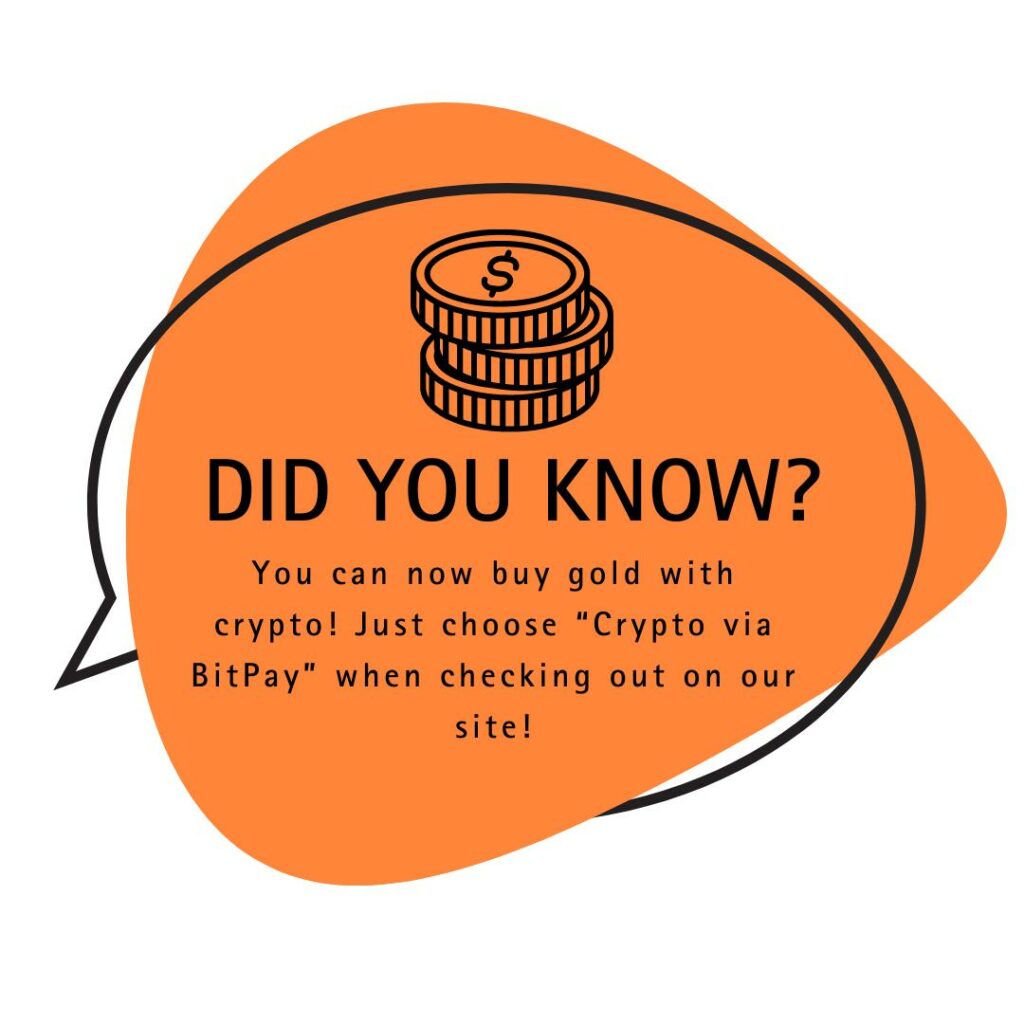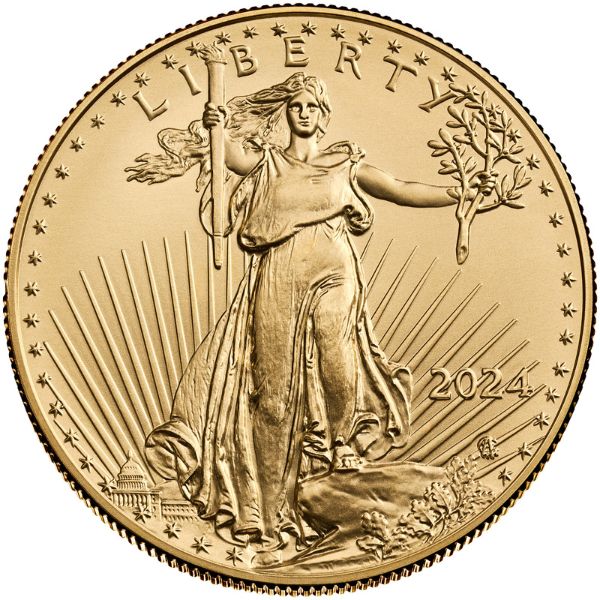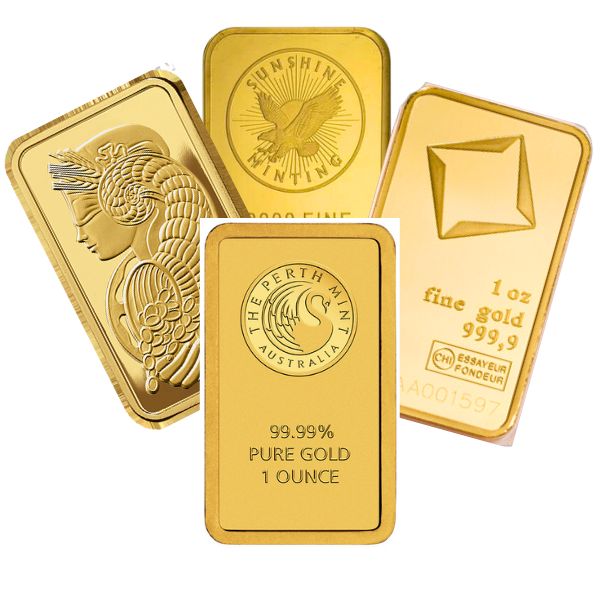Gold or Bitcoin – Comparing Two Nontraditional Investments

At a Glance:
-
-
- Gold and Bitcoin are both non-correlated assets.
- While both investments are risky, gold offers a lower volatility compared to cryptocurrencies.
- Some investors are using gold to “cash in” on their Bitcoin profits while prices are high.
-
Gold or Bitcoin – Comparing Two Non-Traditional Investments
In the past decade, cryptocurrency has taken the investment world by storm. Digital currencies like Bitcoin and its altcoins are high risk, high reward options for any investor with a high risk tolerance. While the volatility of most cryptocurrencies doesn’t work well with traditional portfolios, even some of the world’s most prolific investors have turned to Bitcoin to build wealth.
Often called “digital gold,” the cryptocurrency is often compared to real gold — the precious metal that has remained the world’s most popular alternative investment for over 1,000 years. But is Bitcoin really the new gold, or is it just a passing fad? The question hit the mainstream of financial debate following Bitcoin hit a new all-time-high in late 2017.

Comparing Bitcoin and gold is difficult. While both assets are considered non-traditional investments, their roles in the average portfolio might initially seem completely different. I’m not so convinced. Under the right overarching investment strategy, both digital and real gold can help to diversify and maximize profit for investors.
Bitcoin and gold are both alternative assets. Investors don’t necessarily need to choose between the two. In fact, combining gold and Bitcoin may be a great way for young investors to diversify — and to optimize their odds of long-term investing success.
Correlated Assets — The Pitfalls of Putting All the Eggs in One Basket
To seasoned investors, diversification is key. Really — ask any financial analyst about the number one rule of profit. Nine times out of ten, they’ll say that diversifying a portfolio is one surefire way for an investor to keep their portfolio thriving in any economic landscape. This shouldn’t be surprising, at least not for readers who already understand how a portfolio generates profit over time.
When we talk about alternative investments, we usually mean non-correlated assets. Correlation refers to the relationship between one variable in another. In other words, two things are correlated if price movement (in either direction) of one security leads to a similar movement in the other. This might sound complicated — but it doesn’t have to be.
Say we have an investor who puts most of his/her money into the bond market. The value of a bond generally goes down when the S&P 500 tanks, and it increases in value during thriving times for the S&P 500. These two assets are highly correlated to one another. This is good for some investors, because it allows them to use public information to make an educated guess on whether or not their investment will be profitable.

For other investors, this can spell trouble. Putting all your eggs in one basket is never a good thing, and the truism is especially true when it comes to the high-stakes world of investing. When your portfolio is made up of a complex web of correlated assets, you risk losing far more than you bargained for if one of your foundational investments becomes less valuable.
Hope isn’t lost, though! Smart investors find ways to diversify their portfolio so that a bad day never becomes a bad year.
Traditional assets are highly correlated, which means that poor performance in one market can have a cascading effect on traditional investment portfolios.
Gold and Bitcoin: A Diverse Portfolio’s Best Friends
The problem? Many traditional investments are highly correlated with the same things. As a general rule, most stocks decrease in value when the overall S&P 500 takes a bearish turn.
If an investor chooses to put all of their money into bonds and the S&P 500 falls deeply into the red, they risk losing nearly everything.
How can the average investor keep from putting all their eggs in one basket?
The answer might be right in front of us: non-correlated assets. Gold and Bitcoin both fall into this camp. While both assets are sometimes correlated with certain market movements, these alternative investments tend to perform well during periods where the rest of a market struggles to stay in the green.

Still, adding gold and Bitcoin to a portfolio isn’t as cut and dry as some analysts may make it seem. Aside from complex tax consequences of investing in a variety of different assets, some investors may have trouble figuring out the right percentage of their cash they should be putting into digital and physical gold.
Traditional financial advice holds that no more than 10 percent of an investor’s portfolio should be made up of precious metals. The equation is a bit different for Bitcoin and other cryptocurrencies. Generally, advisors recommend that investors with a long time horizon and high risk tolerance load up on riskier investments like cryptocurrency.
Gold and Bitcoin are both non-traditional assets, which makes them great options for investors who want to avoid losing too much money when the overall market starts to falter.
Risk Management — Diversity Reigns Supreme
Clearly, physical and ‘digital’ gold aren’t quite as different as some investors have been led to believe. In fact, the two assets are both (to an extent) non-correlated and offer differing risk profiles. This is important, because portfolio diversification is about more than just buying different assets and hoping some perform well enough to offset the losers.
Investors should also diversify their portfolios with a variety of different risk types. This is often called risk diversification, and it’s a strategy employed by even the fiercest minds on Wall Street. Assets like gold are relatively low risk. Gold’s price can be volatile from day to day, but it’s long-term price movement is slow and steady. Additionally, gold can never go all the way to zero because of its intrinsic value.
Bitcoin is different. Some experts even believe that Bitcoin and similar cryptocurrencies have no intrinsic value. Bitcoin’s price swings can be swift and significant in either direction, making it a volatile and high risk investment. Take 2021–22 for example. From December of 2021 to January of 2022, Bitcoin lost nearly 50% of its value. This sort of loss would be unheard of in the precious metals market. However, Bitcoin also increased in value by a whopping 300% in the 3 months leading up to a new all-time-high in March of 2021.
The conclusion? Bitcoin is high risk, but it’s also high reward. Bitcoin and gold may both be scarce and popular assets, but they offer vastly different risk propositions for the average investor. Combining the two assets fits nicely with the tried-and-true investment advice of risk diversification. The modest, consistent gains associated with gold might offset some of the big price swings provided by an investor’s crypto holdings.
Bitcoin and gold complement one another by allowing investors to diversify the risk level of assets in their portfolios.
Is It Time to Buy Gold With Bitcoin?
Gold dealers have been around for about as long as humans have been in love with the yellowish precious metal. But in the 21st century, the age-old industry has slowly started to accept that digital gold isn’t going anywhere anytime soon.
Investors who want to diversify their holdings with gold bars and coins can now buy gold with Bitcoin. Convenient payment processors like BitPay have made it easier than ever for online retailers to open their doors to Bitcoin investors. And crypto enthusiasts have responded in kind — Google searches for “how to buy gold with Bitcoin” hit record numbers in 2023 as investors looked for ways to turn their digital gold into the real thing.
Buying gold with Bitcoin comes with a vast array of benefits, too. Dealers like Hero Bullion offer a discount for purchases made using cryptocurrency. It’s also worth mentioning that buying gold with Bitcoin is one of the fastest and safest ways to pay for shiny gold coins and bars.
If you’re wondering how to choose between Bitcoin and gold, the good news is that you may not need to choose at all. The two assets work in tandem to help investors diversify and expand their portfolios. While the mass appeal of Bitcoin continues to grow, it’s tough to argue with the centuries-old track record of real, genuine gold bullion.
Many gold dealers now accept Bitcoin as payment for gold, making the precious metal a convenient way for crypto fans to diversify their portfolios with a consistent, historically valuable non-correlated asset.
You might also be interested in:
About The Author
Michael Roets
Michael Roets is a writer and journalist for Hero Bullion. His work explores precious metals news, guides, and commentary.
